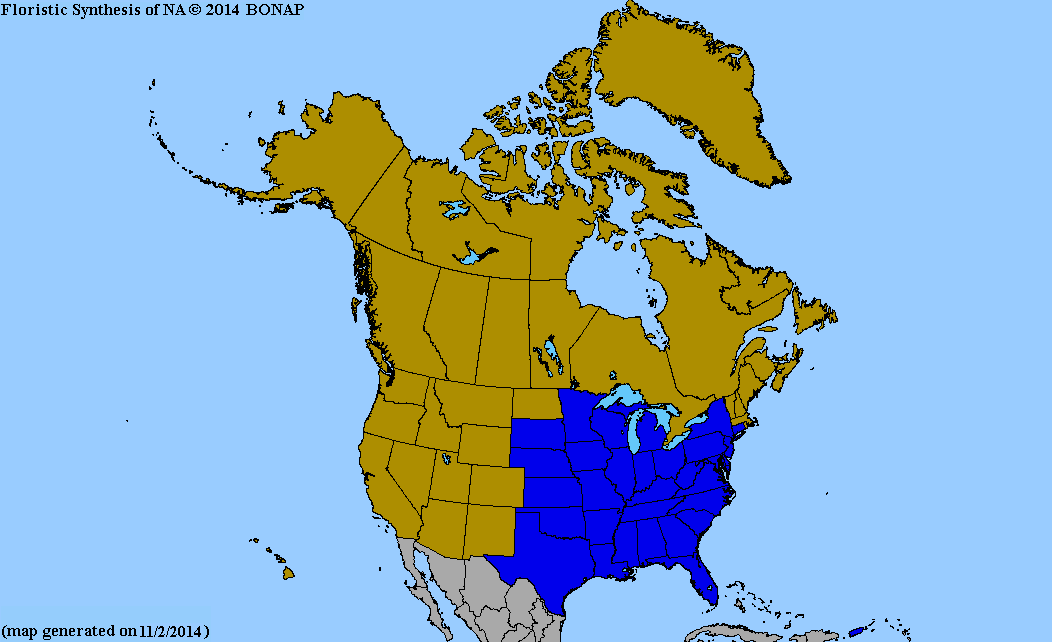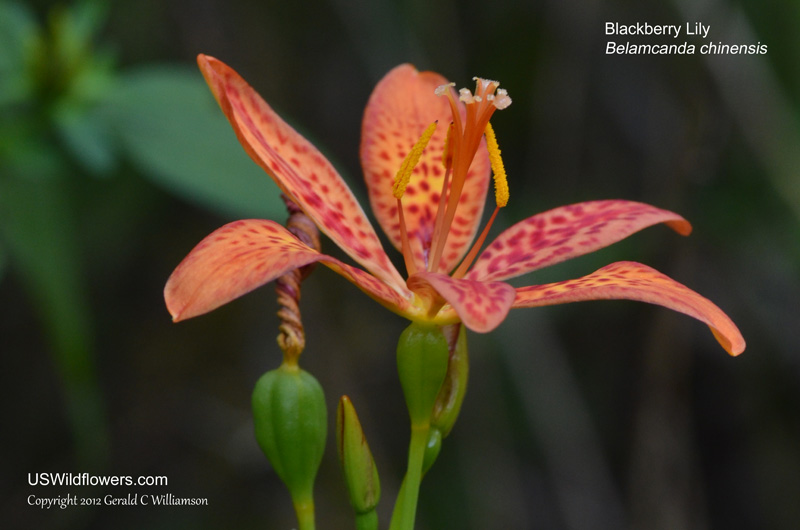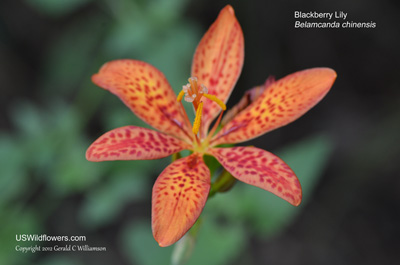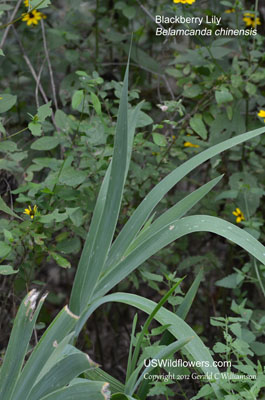Blackberry Lily, Leopard Flower, Leopard Lily - Iris domestica
|
Iris domestica - Blackberry Lily, Leopard Flower, Leopard Lily. Introduced from Asia, Iris domestica escaped from cultivation and apparently naturalized fairly quickly since Augustin Gattinger, a Tennessee botanist from the 19th century, believed it to be a native species. This was previously classified as Belamcanda chinensis, the only species in the genus Belamcanda, but recent molecular studies have resulted in the reclassification into the Iris genus as Iris domestica.
"Blackberry" in the common name comes from the tight clusters of dark seeds the plant produces.
Found in:
AL, AR, CT, DC, DE, FL, GA, IA, IL, IN, KS, KY, LA, MD, MI, MN, MO, MS, NC, NE, NJ, NY, OH, OK, PA, SC, SD, TN, TX, VA, VT, WI, WV | 
Distribution of Iris domestica in the United States and Canada:

Map courtesy of The Biota of North America Program.
Map color key
Search Our Database: Enter any portion of the Scientific, Common Name, or both.
Do a general Google search of the entire site:
#ad
 Follow USWildflowers on Twitter
| | Site: Cedars of Lebanon State Park, Wilson County, TN Date: 2012-August-04 | Photographer: Gerald C. Williamson
Nikon D7000
Tamron AP AF 90MM Macro | | The blossom of Blackberry Lily is orange with purple or crimson spots, and also usually has several flowers in the terminal inflorescence, each of which only lasts a single day. The Wood Lily has more red, and the Wood Lily blossom is larger; that of Blackberry Lily is usually not more than 2 inches across. | | 
| | Site: Cedars of Lebanon State Park, Wilson County, TN Date: 2012-August-04 | Photographer: Gerald C Williamson
Nikon D7000
Tamron AP AF 90MM Macro | | The flower of Iris domestica is held upright and has 3 petals and 3 similarly colored sepals. Above them are three stamens and a divided stigma. | | Click on the photo for a larger image

| | Site: Cedars of Lebanon State Park, Wilson County, TN Date: 2012-August-04 | Photographer: Gerald C Williamson
Nikon D7000
Tamron AP AF 90MM Macro | | When I first saw this flower along the road through the Cedars of Lebanon State Park in Tennessee, I thought it was a Wood Lily (Lilium philadelphicum, a species that eluded me until June, 2013.) I was surprised that it was more diminutive than I expected (and indeed the Wood Lily has a larger flower.) However, a quick look through my field guide proved it was not Lilium philadelphicum because, among other key features, Lilium philadelphicum has whorls of leaves on the stem up to 4 inches long, while Iris domestica has this fan of sword-like leaves that are up to 18 inches long. | | Click on the photo for a larger image

|
References used for identification and information:
|
|
| |
| #ad
|
|





